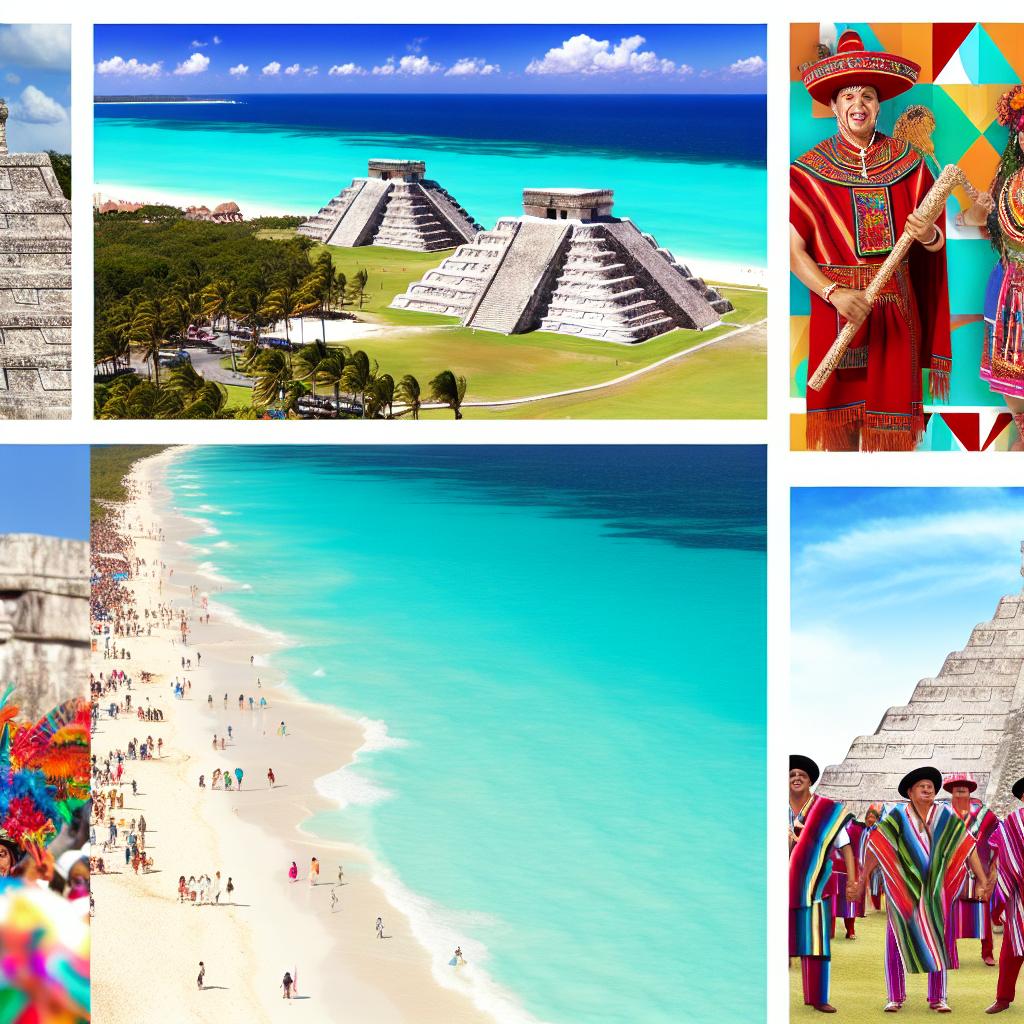Overview of Mexico’s Tourism Industry
Mexico has solidified its position as a premier global tourism destination, drawing millions of tourists each year. The nation’s rich cultural heritage, varied landscapes, and top-notch amenities make it a preferred choice for travelers worldwide. According to the World Tourism Organization, Mexico consistently ranks among the top ten most visited countries globally.
Key Attractions
Mexico is renowned for its diverse attractions, appealing to a broad spectrum of interests. Travelers can explore the ancient ruins of the Aztec and Mayan civilizations, lounge on the immaculate beaches of the Caribbean and Pacific coasts, or delve into the vibrant cultural scene of its cities. Key sites of interest comprise both historical and contemporary significance, catering to diverse traveler preferences.
Chichen Itza is one of the most iconic sites, recognized as a UNESCO World Heritage site and one of the New Seven Wonders of the World. This ancient Mayan city is famed for its well-preserved pyramid and its importance in understanding pre-Columbian history. Visitors to Chichen Itza can marvel at the architectural expertise of the Mayan civilization and learn about their astronomical achievements and cultural practices.
Another major attraction is Cabo San Lucas, celebrated for its breathtaking beaches and lively nightlife. Its proximity to North America makes it a favored destination for tourists seeking sun, sand, and sea. In addition to its natural beauty, Cabo San Lucas offers a variety of activities, from water sports and whale watching to luxurious dining and entertainment options.
Mexico City, the nation’s capital, is a vibrant metropolis that offers a mix of history, culture, and modern attractions. Tourists can explore the National Anthropological Museum, which provides a comprehensive overview of the country’s rich history and indigenous cultures. The historic city center, another UNESCO World Heritage site, showcases colonial architecture, bustling plazas, and an array of cultural events that reflect Mexico’s diverse heritage.
Economic Impact
Tourism plays a vital role in Mexico’s economy, contributing substantially to the nation’s GDP and providing millions of employment opportunities. According to the Secretariat of Tourism, the tourism sector accounted for approximately 8.7% of the country’s GDP in recent years. The revenue generated by tourism supports the local economy and fosters infrastructure development across various regions.
This economic advantage is evident in regions heavily reliant on tourism, where jobs and businesses are buoyed by the influx of visitors. From hospitality and transportation to local crafts and services, the sector promotes broad economic participation. As a result, tourism not only fosters regional development but also enhances the global image of Mexico as a flourishing destination, thereby attracting more investments and opportunities.
Infrastructure and Accessibility
Mexico’s strategic geographic location enhances its accessibility, with numerous international airports that provide direct flights from major cities around the world. This connectivity significantly eases travel logistics for international visitors. Once in Mexico, tourists find that the country’s road and public transportation infrastructure is increasingly robust.
Major cities are interlinked by modern highways, allowing convenient transportation between popular tourist destinations. For long-distance travel, buses and domestic flights offer manageable and affordable options. These advancements in infrastructure are part of ongoing efforts to make visiting Mexico not only appealing but also effortless for international travelers.
Challenges and Sustainable Tourism
Despite its success in attracting a vast number of visitors, Mexico’s tourism industry encounters several challenges. Over-tourism in specific regions has resulted in environmental degradation and stressed local resources. Such challenges underscore the need for sustainable tourism practices to ensure that Mexico remains a cherished destination.
The Mexican government and various organizations are actively promoting initiatives focused on sustainable tourism. These efforts emphasize the preservation of natural habitats, reduction in waste, and strategies to ensure the benefits of tourism are shared equitably with local communities. For instance, certain areas have adopted eco-friendly accommodations and community-based tourism models that promote responsible travel.
To learn more about Mexico’s sustainability efforts in tourism, visitors can refer to the Secretariat of Tourism’s official site, which provides detailed information on ongoing and upcoming sustainability initiatives.
Future Prospects
Looking to the future, Mexico aims to further bolster its standing in the global tourism sector. The government’s strategic plans include targeting emerging markets, diversifying its tourist offerings, and enhancing promotional efforts to attract an increasing number of visitors.
By capitalizing on unique assets such as its rich cultural heritage, beautiful natural landscapes, and modern amenities, Mexico can expand its appeal to a wider audience. Strategic diversification of tourism offerings, which encompasses eco-tourism, cultural tourism, and adventure tourism, allows Mexico to cater to varying tourist interests.
Additionally, addressing existing challenges, such as environmental concerns and resource management, is crucial. By implementing sustainable practices and maintaining a strong focus on community involvement, Mexico can ensure that tourism remains a positive force for both its economy and its cultural and natural landscapes.
Mexico remains poised to continue its impressive growth trajectory in the tourism sector, ensuring that it remains a top destination for international visitors long into the future.







